Five easy home exercises for older people
Keeping fit and healthy is an important part of ageing well, but it’s even more important now as Australia is battling the impact of coronavirus.
![<p>Doing exercise at home is important to maintaining your mobility. [Source: Shutterstock]</p>](https://agedcareguide-assets.imgix.net/news/articles/news/articles/shutterstock_330052445.jpg?fm=pjpg&format=auto&w=550&q=65)
Doing exercise at home is important to maintaining your mobility. [Source: Shutterstock]
Exercise is vital to keep your muscles and joints moving well, especially for older people, and to support your independence for as long as possible but can be tricky when self-isolating at home and a walk to the shops or the local swimming pool is no longer an option.
Adelaide based physiotherapist, PhysioWest, has provided five chair exercises that you can undertake at home.
These exercises are a great general strength and conditioning program that you can perform on a daily basis.
*Disclaimer: if you have any medical conditions or comorbidities, check with your doctor before trying these exercises.
Supported calf raise
This exercise is great to build strength in your lower legs, specifically your calf muscles, which helps reduce shuffling when walking.
Start off standing with both legs straight and at hip-width apart.
Hold on to a wall or supportive object, like a chair, for balance.
Rise up onto your toes, keeping your legs straight, and control the movement back down to the start position.
Perform this 10 times.

Supported marching on the spot
This exercise encourages hip flexion and builds the strength in your knee and hip muscles to be able to lift your legs when walking to clear the ground. Building strength in these muscles will make walking a lot easier and effortless.
Stand straight holding onto a chair or table for support.
Bend one leg, bringing your knee up in front of you towards your chest.
Control the movement as you lower back down.
Repeat the movement on the other leg and continue to alternate legs.
Make sure you do not lean your body, or hitch your pelvis up as you lift your leg.
Perform this 10 times.
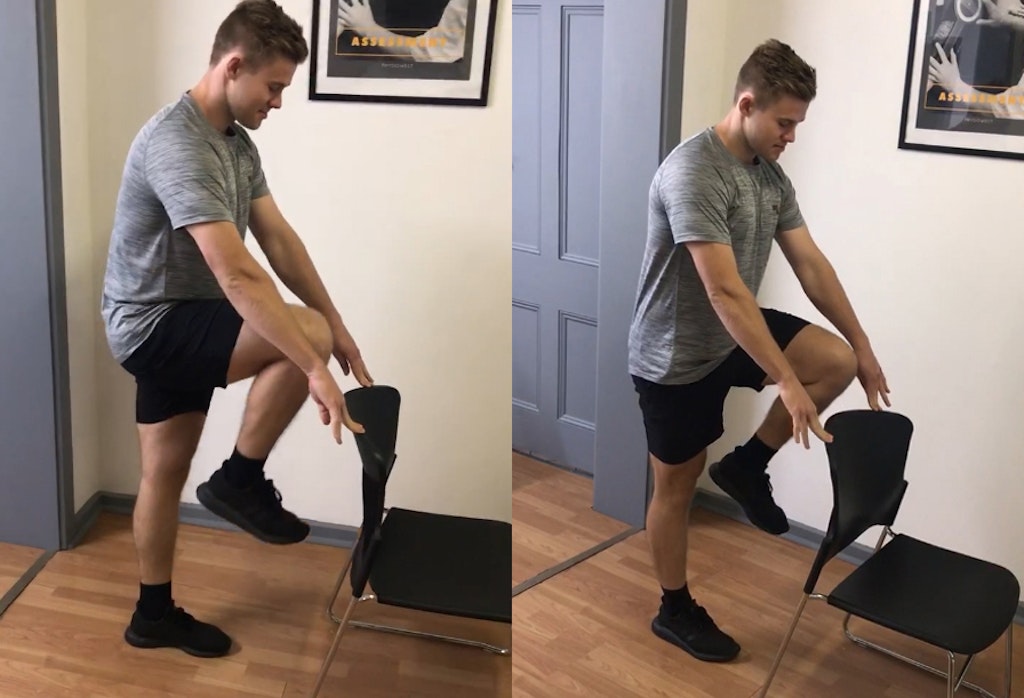
Standing hip abductions
This exercise builds strength in your hip stabilising muscles, also known as your glutes. These muscles are important for stabilising our body during everyday tasks such as walking.
Stand straight, holding a chair or table for balance.
Whilst standing on one leg, hover your other leg off the ground and slowly move it out to the side.
Control the leg as you bring it back into the starting position, and then repeat the movement.
Make sure you do not lean your body or hitch your hip up as you move your leg.
Complete this exercise 10 times on one leg and repeat on the other leg.
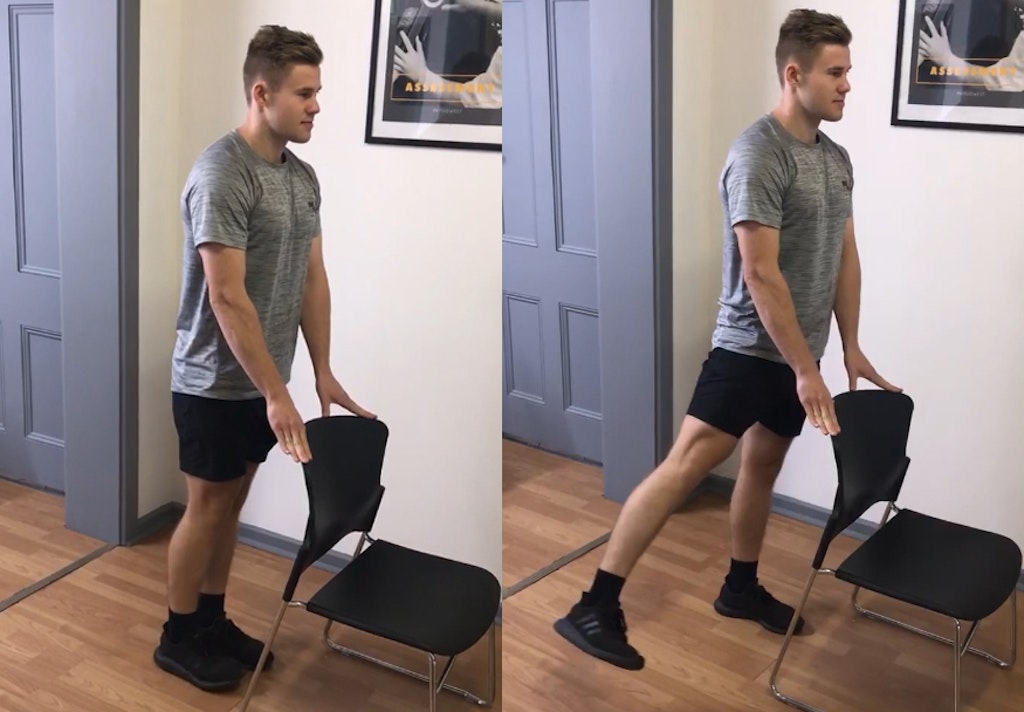
Sit to stand
This exercise is excellent to perform on a daily basis to build and maintain strength in your legs. It will also assist you by making transfers from a chair that much easier.
Start in a seated position.
Bring your bottom to the edge of the chair with your feet back underneath you.
Try to do this exercise without using your hands.
Stand up until you are completely upright and then gradually sit back down.
Control this movement and then repeat.
If you do need to use your hands, try to limit their use as much as you comfortably can.
Complete this exercise 10 times.
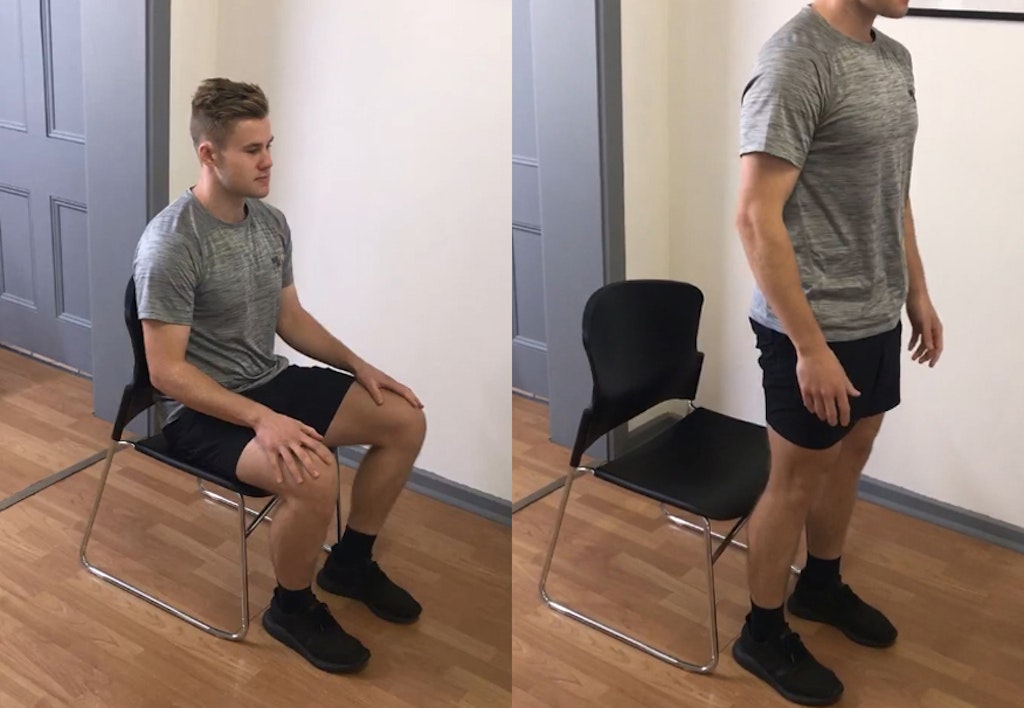
Tandem stance balance activity
This exercise, if performed daily, can vastly improve your static and dynamic balance. This means you will feel more steady on your feet when standing and reaching, and whilst walking. Therefore, you can say goodbye to that furniture surfing around the home.
Place two chairs on either side of you and stand in the middle.
Holding on to the chairs, place your right foot directly in front of your left foot in a tandem stance and maintain that posture.
Try and balance without holding on.
Switch feet so the opposite foot is now in front and repeat.
A kitchen work surface or a corridor is a good place to do this, using the walls or the worktop.
To challenge your balance, add in alternating head movements by looking side to side, and up and down.
Perform for 20 seconds on each leg and repeat three times.
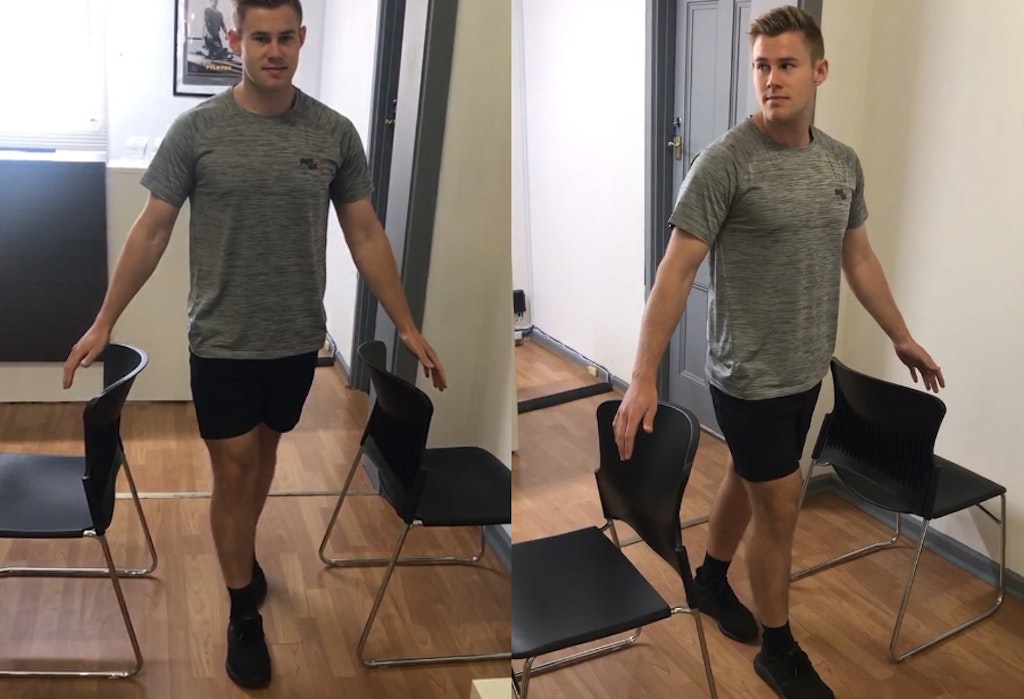
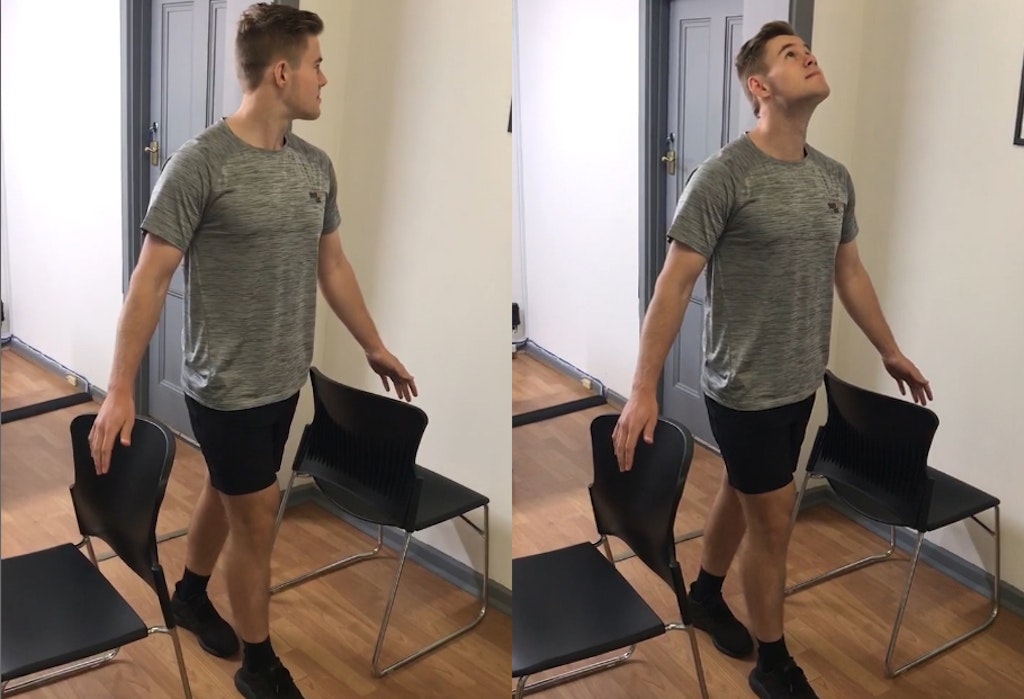
Final tips and advice
Always work within your limits and only perform exercises if you can tolerate them.
Safety is imperative when undertaking exercise, so always perform an exercise with a nearby support for safety, like a chair or table.
If any of these exercises cause discomfort or are aggravating, make sure to rest and pop a heat pack on the painful area.
As PhysioWest likes to say, “Motion is lotion” and these exercises can help you continue to use your body to its full potential.
For more information about coronavirus, visit the Aged Care Guide’s COVID-19 update page.
Do you have any questions about the coronavirus that you want answered? Tell us in the comments below or email journalist@dps.com.au.





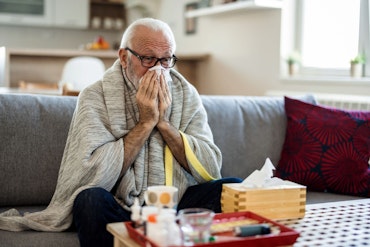





![The new Aged Care Act exposure draft is slated for release in December of 2023, but advocates hope to see it rolled out on January 1, 2024. [Source: Shutterstock]](https://agedcareguide-assets.imgix.net/news/articles/wp/agedcareact__0811.jpg?fm=pjpg&w=520&format=auto&q=65)











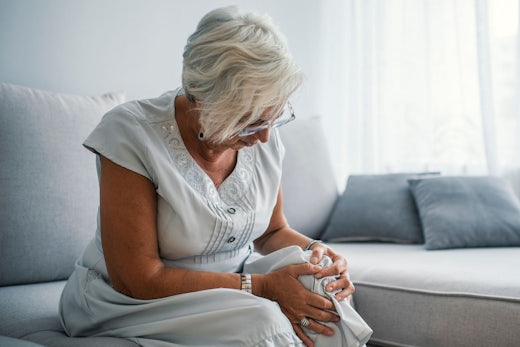
Comments